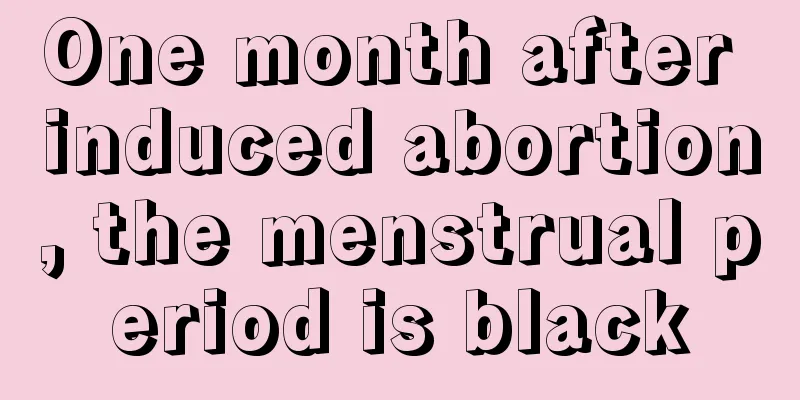Can ultrasound tell if the fallopian tubes are blocked?

|
The fallopian tubes are the main channels for transporting eggs. Once blocked, it means that women's normal pregnancy will be affected. Therefore, if you want to check whether the fallopian tubes are blocked, you must go to a reliable infertility hospital for relevant examinations. Can B-ultrasound show blockage of fallopian tubes? Can B-ultrasound show blockage of fallopian tubes? 1. Color Doppler Ultrasound Examination Color Doppler ultrasound examination of both fallopian tubes includes general color Doppler ultrasound examination and ultrasound fluid infusion. During general examination, some hydrosalpinx can be detected on ultrasound, which is manifested as enlarged and thickened fluid shadows on both sides of the uterus. However, ultrasound cannot diagnose whether it is hydrosalpinx or ovarian cyst. It can only confirm the possibility of water accumulation. 2. Hydrotubation Also known as tubal hydrotubation, tubal hydrotubation is the process of inserting a tube into the patient's uterine cavity and then injecting 20 ml of liquid medicine through the tube. The liquid medicine is usually saline with antibiotics. 3. X-ray hysterography X-ray hysterography can show the size, shape and position of the uterus and the shape of the bilateral fallopian tubes on the monitor and X-ray images. 4. Laparoscopy If there is bilateral proximal obstruction of the fallopian tubes (the interstitial part and muscle wall of the fallopian tubes on both sides), the methylene blue fluid will not be seen overflowing into the abdomen through the fimbriae of the fallopian tubes on both sides. If there is bilateral distal obstruction of the fallopian tubes (the ampullae and fimbriae of the fallopian tubes), it can be seen that the fimbriae and ampullae of the fallopian tubes on both sides are enlarged, thickened and stained blue, but there is no methylene blue fluid flowing from the fimbriae of the fallopian tubes on both sides and injected into the abdomen. Treatment for blocked fallopian tubes 1. Bilateral tubal obstruction of the interstitial part and muscular wall of the fallopian tube The first choice should be X-ray tubal interventional recanalization. If the recanalization is unsuccessful, in vitro fertilization treatment should be performed. Because under normal circumstances, there is usually only one chance for X-ray tubal interventional recanalization, the attending physician must have such awareness, that is, to do a good job in the details of each stage of the interventional surgery, to the greatest extent possible to consider the patient's chances and wishes of completing artificial insemination, so as a doctor to improve their own diagnosis and treatment skills is particularly important. 2. Obstruction of the Fallopian Tube Ampulla Do IVF to treat blocked fallopian tubes. 3. Bilateral tubal fimbriae obstruction One is to undergo bilateral salpingostomy under laparoscopic surgery or bilateral salpingostomy through open surgery. The other is to undergo in vitro fertilization to treat fallopian tube blockage, but the success rate is not very high, only 20%. 4. Bilateral adhesions around the fallopian tubes It can lead to blockage of the fallopian tubes and problems with egg transport, leading to infertility. The treatment method mainly chooses bilateral fallopian tube adhesion separation under laparoscopic surgery. 5. Fallopian tube tuberculosis The resulting fallopian tube blockage is limited to fallopian tube recanalization treatment. If the uterine wall is healthy, in vitro fertilization treatment can be carried out. 6. Hydrotubation It can be started 3 days after the menstrual period ends. Dissolve 160,000 t of penicillin, 2 mL of procaine, 5 mg of dexamethasone, and 5 mg of α-chymotrypsin in 20 mL of saline and introduce into the uterine cavity through the fallopian tube water hose. Once every other day, until before ovulation to treat fallopian tube blockage. Sustainable treatment can last for 2 to 3 physiological cycles. This treatment method is still chosen by most designated medical institutions, but it has poor efficacy and a high false positive rate. 7. Surgical treatment For those whose fallopian tube obstruction fails to respond to conservative treatment, bilateral salpingostomy, adhesion separation, bilateral salpingectomy, and hysterectomy can be performed on the diseased bilateral fallopian tubes. Basic surgical treatment causes large incisions and slow recovery. |
<<: A woman dreams of three snakes
>>: Can pregnant women use Suye polypeptide?
Recommend
Tofu-like leucorrhea
The main symptoms of tofu-like leucorrhea are som...
Does the stringy vaginal discharge appear before or after ovulation?
Leucorrhea is a substance secreted from the femal...
How long does it take for ovulation to occur after leucorrhea appears?
Under normal circumstances, girls ovulate once a ...
What to eat during confinement to increase milk production
After the birth of a newborn, many mothers begin ...
Normal range of cervical length in pregnant women
Everyone's physical development is different,...
Normal vulva picture
Many women are concerned about the beauty and ski...
Things to watch out for after transurethral resection of the prostate
Author: Wang Weifu, Chief Physician, Hainan Provi...
A magical journey of a "blood train"
Why is blood red? Does donating blood affect your...
Google official data: In-app purchases through the Play Store increased 700% year-on-year
Google held a seminar on how to make money on And...
What is the "Disease X" that the WHO has repeatedly warned about? | BoLan Daily
Your best "insider" in the scientific c...
What is the reason for the left lower abdomen pain female
Many women experience pain in the left side of th...
Can I take a bath during early pregnancy?
If you are in the early stages of pregnancy, you ...
Human warmth--This is the 3523rd article of Da Yi Xiao Hu
This is the 3523rd article of Da Yi Xiao Hu In an...
How to remedy the problem of dyeing your hair during menstruation?
During menstruation, women's body resistance ...
What to do if you have a lump in your breast
For friends who are diagnosed with breast lumps, ...









